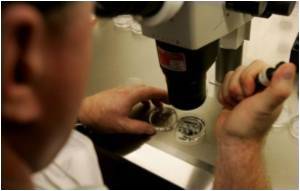
The technology could be used to make adoptive T cell transfer more effective. The cell transfer has already shown encouraging results in clinical trials. This treatment involves removing disease-fighting immune cells called T cells from a cancer patient, multiplying them in the laboratory and then infusing them back into the patient’s body to attack the cancer. The effectiveness of this therapy, however, is limited by the finite lifespan of T cells — after many divisions, these cells become unresponsive and inactive.
Assessing the age and responsiveness of T cells — and therefore transfer only young functional cells back into a cancer patient’s body — offers the potential to improve the therapeutic outcome of several cancers. This line of treatment could be effective in metastatic melanoma, non-Hodgkin’s lymphoma, chronic lymphocytic leukemia and neuroblastoma.
The new microfluidic device developed at Georgia Tech and Emory University could help evaluate cell responsiveness and accurately predict cell “age” and quality. “The statistical model, enabled by the data generated with the microfluidic device, revealed an optimal combination of extracellular and intracellular proteins that accurately predict T cell age,” said Melissa Kemp, an assistant professor in the Wallace H. Coulter Department of Biomedical Engineering at Georgia Tech and Emory University. “Knowing this information will help facilitate the clinical development of appropriate T cell expansion and selection protocols.”
Details on the microfluidic device and statistical model were published in the March issue of the journal Molecular & Cellular Proteomics. This work was supported by the National Institutes of Health, Georgia Cancer Coalition, and Georgia Tech Integrative Biosystems Institute.
Currently, clinicians measure T cell age by using multiple assays that rely on measurements from large cell populations. The measurements determine if cells are exhibiting functions known to appear at different stages in the life cycle of a T cell.
Advertisement
In the future, Kemp plans to use this approach of combining multiple cell-based experiments on a microfluidic chip to integrate single-cell information with population-averaged techniques, such as multiplexed immunoassays or mass spectrometry.
Advertisement





